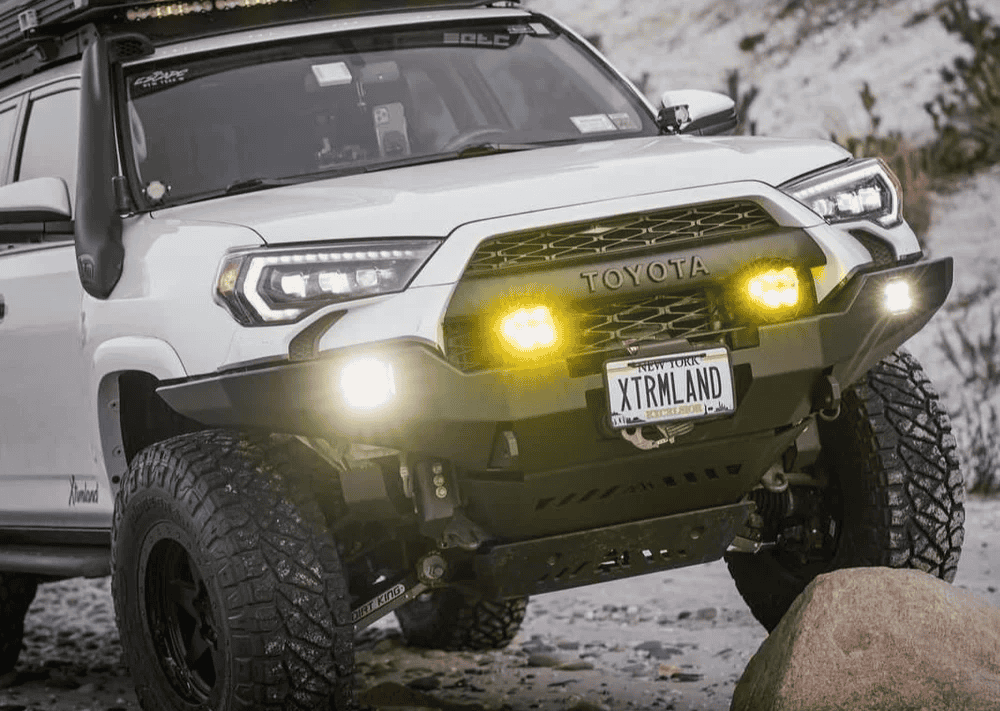Overland Vehicles

When you leave cell coverage, a satellite communicator keeps you reachable for check ins, weather updates, and emergency help. Devices like InReach use the Iridium constellation to send and receive short messages almost anywhere on Earth. That means location sharing, two way messaging, and SOS escalation through a global monitoring center. Unlike a basic beacon that only fires a distress signal, a messenger maintains a thread of communication so plans can adapt in real time. For overland travel, river shuttles, and high alpine routes, a reliable install is not a luxury. It is a safety system.
These tools serve different roles. A personal locator beacon is simple and subscription free, ideal as a last resort but unable to send custom texts. A satellite phone supports voice calls yet is bulkier and needs more thoughtful charging plans. InReach strikes a middle ground with two way text, tracking, presets, and weather features on a compact device. Choosing the right category comes down to your route risk, your team, and how often you need to share updates.
Satellites want a clear view of the sky. Any metal roof, rack, or storage box can shadow the antenna and degrade performance. Roof placement and smart cable routing improve link quality and reduce retries. The goal is consistent line of sight while parked and while moving.
Your communicator is only as good as its configuration. Set SOS contacts, message presets, and tracking intervals before leaving pavement. Test with a known contact, confirm they receive your location and replies, and practice canceling a test SOS through the interface so the process is familiar under stress.
A clean installation blends good radio habits with smart vehicle electrics. Start by selecting a mount that locks the device or an external antenna with a stable sky view. Many InReach devices work best with the unit itself facing up, or with an approved external antenna where the sky is least obstructed.
Antenna placement
Power integration
Cable routing
Radio performance hinges on geometry. The more of the sky the antenna can see, the more likely a satellite handoff remains smooth as you drive through canyons or forests. If you use an external antenna, choose a spot on the roof with the most open view and ensure the base has solid ground contact per manufacturer guidance. Use a waterproof gland for cable entry and a UV stable jacket to resist sun and vibration.
Treat the communicator like critical safety gear. Power it from a stable circuit, fuse it near the source, and label the fuse so it is easy to check. If your van has large electrical loads, run the communicator feed on the opposite side of the vehicle to reduce interference. Ferrite chokes on power or data lines can tame high frequency noise. Confirm the device boots cleanly during fridge cycles, inverter startup, and while the alternator is charging.
Before the first trip, update firmware, load maps if supported, and sync contacts and presets. Enable tracking at an interval that balances detail with battery life. Send messages from inside and outside the vehicle, then review signal logs. Practice manual location checks under tree cover and open sky so you learn how environment affects time to first fix.
Adventure rigs often carry roof racks, solar panels, storage cases, and awnings. Each item can block parts of the sky. Solve this by biasing placement to the most open quadrant and keeping the antenna clear of tall structures. If multiple radios share the roof, maintain spacing so they do not compete for space or introduce interference.
Weather sealing and durability
Usability and access
Redundancy and training
Professional support is valuable when your build includes complex electrical systems, solar arrays, and aftermarket electronics. A properly planned layout protects the antenna view, reduces electrical noise, and keeps the user interface within easy reach.
If your rig has roof accessories, dual batteries, or a high power inverter, expert routing and RF aware placement can make the difference between spotty performance and a communicator that simply works. For full rig planning and integration, explore Overland rigs to see how complete systems come together.
A well executed upfit accounts for sky view, ballast, water sealing, and safe power feeds. It also includes a handoff where features are explained and tested with you on site. Learn what a full package looks like under Custom overland upfit.
Look for a shop that documents circuits, labels fuses, and tests under load. Reviews and proven builds are helpful signals. See more about the team’s approach at Why choose OZK Customs.
If you want your communicator to work when it truly matters, treat installation like life safety gear. Choose a spot with genuine sky, wire it to a stable circuit, seal the roof with care, and test with the same discipline you bring to route planning. OZK Customs can integrate your InReach into a new build or refine your current setup with antenna optimization, clean power, and a thorough walkthrough so you leave confident and ready for the wild.
Ready to trust your connection beyond cell range. Book an install consult with OZK Customs. Our team plans antenna placement, safe power integration, and signal testing for real world reliability. Fly into Fayetteville, pick up your upgraded rig, and head straight for the backcountry with confidence.
ADDRESS:
6159 E Huntsville Rd, Fayetteville, AR 72701
PHONE:
(479) 326-9200
EMAIL:
info@ozkvans.com